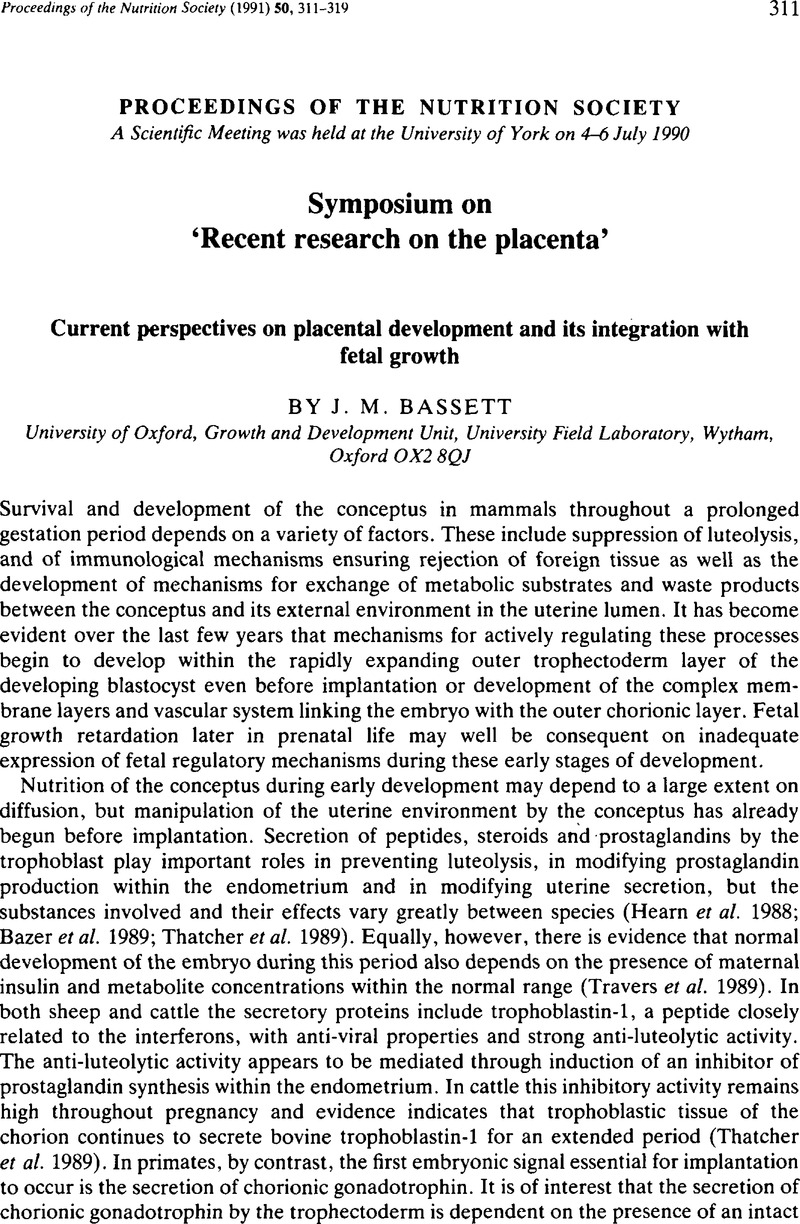Crossref Citations
This article has been cited by the following publications. This list is generated based on data provided by Crossref.
Khera, K. S.
1992.
A morphologic basis postulated for valproic acid's embryotoxic action in rats.
Teratogenesis, Carcinogenesis, and Mutagenesis,
Vol. 12,
Issue. 6,
p.
277.
Bassett, J. M.
1992.
The endocrine regulation of growth during early life: a nutritional perspective.
BSAP Occasional Publication,
Vol. 15,
Issue. ,
p.
47.
Leese, Henry J.
Conaghan, Joe
Martin, Karen L.
and
Hardy, Kate
1993.
Early human embryo metabolism.
BioEssays,
Vol. 15,
Issue. 4,
p.
259.
Wooding, F. B. P.
and
Flint, A. P. F.
1994.
Marshall’s Physiology of Reproduction.
p.
233.
Garnica, A D
and
Chan, W Y
1996.
The role of the placenta in fetal nutrition and growth..
Journal of the American College of Nutrition,
Vol. 15,
Issue. 3,
p.
206.
Robinson, J. J.
Sinclair, K. D.
and
McEvoy, T. G.
1999.
Nutritional effects on foetal growth.
Animal Science,
Vol. 68,
Issue. 2,
p.
315.
Wallace, J.M.
Bourke, D.A.
Aitken, R.P.
Palmer, R.M.
Da Silva, P.
and
Cruickshank, M.A.
2000.
Relationship between Nutritionally-Mediated Placental Growth Restriction and Fetal Growth, Body Composition and Endocrine Status During Late Gestation in Adolescent Sheep.
Placenta,
Vol. 21,
Issue. 1,
p.
100.
Duarte, M.S.
Gionbelli, M.P.
Paulino, P.V.R.
Serão, N.V.L.
Martins, T.S.
Tótaro, P.I.S.
Neves, C.A.
Valadares Filho, S.C.
Dodson, M.V.
Zhu, M.
and
Du, M.
2013.
Effects of maternal nutrition on development of gastrointestinal tract of bovine fetus at different stages of gestation.
Livestock Science,
Vol. 153,
Issue. 1-3,
p.
60.
Zago, D.
Canozzi, M. E. A.
and
Barcellos, J. O. J.
2019.
Pregnant cow nutrition and its effects on foetal weight – a meta-analysis.
The Journal of Agricultural Science,
Vol. 157,
Issue. 1,
p.
83.
Broadhead, Devin
Mulliniks, J. Travis
and
Funston, Rick N.
2019.
Developmental Programming in a Beef Production System.
Veterinary Clinics of North America: Food Animal Practice,
Vol. 35,
Issue. 2,
p.
379.





